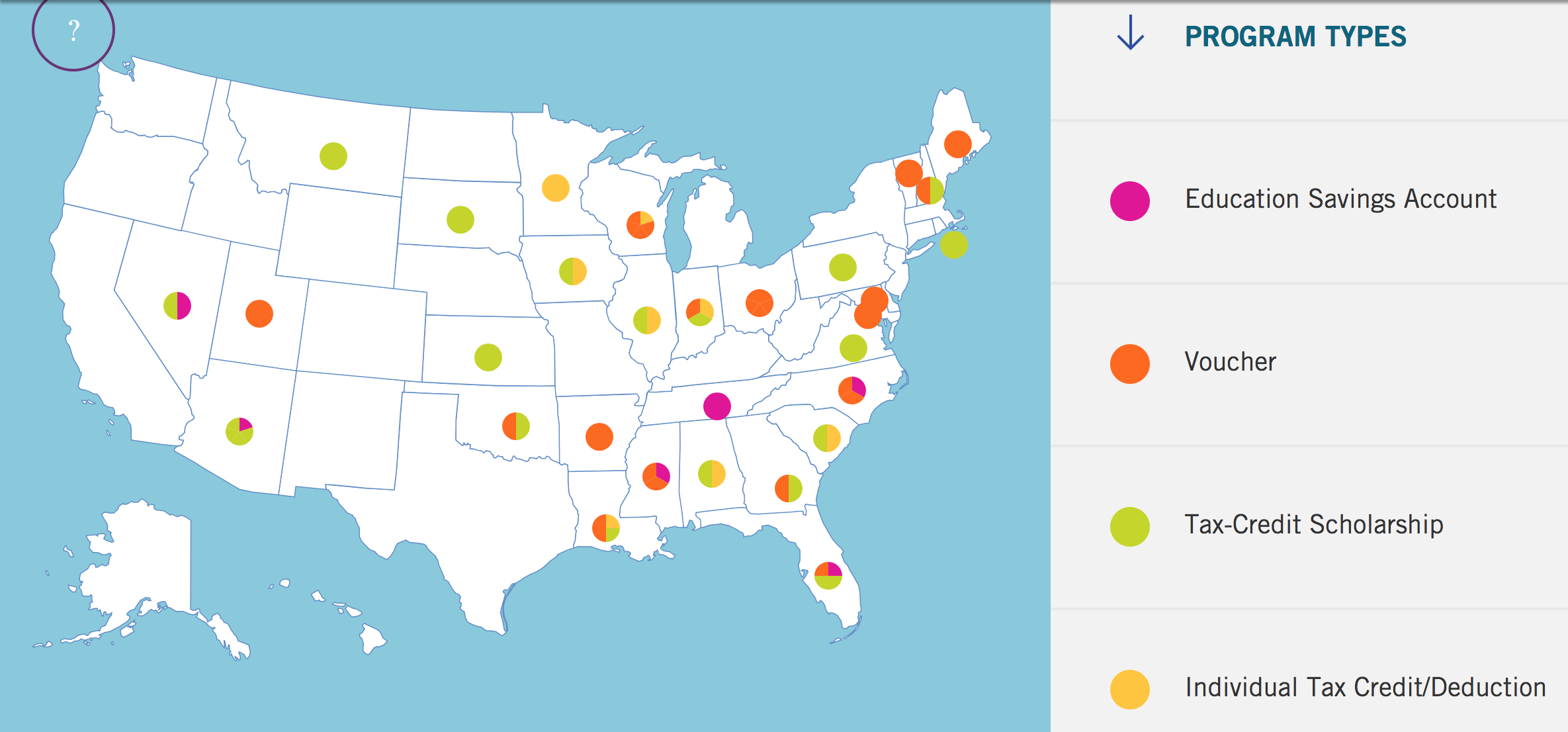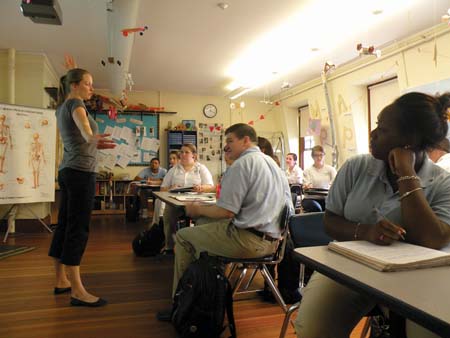What is School Choice?
School choice is the idea that public education funds can be mobilized so that parents and students can select from a range of schools, which may include public schools, private schools, charter schools or any other learning environment (“What is School Choice?,” n.d.). This can occur through school voucher programs, the funding of charter and magnet schools, individual tax credits and a handful of other funding schemes.
The Arguments
Because school choice is such a broad issue covering so many different school system and education models, the pros and cons are endless. Below are a few of the more popular arguments.
Supporters may be in favor of simply charter and magnet options, or the entire range of school choice options. Supporters argue that school choice:
- allows funding to follow students to the schools that best fit their needs
- expands alternatives to traditional public schools for children with poor options in their neighborhoods
- enables parents to direct their children’s education
- can generate competition that betters traditional public schools
- choice and vouchers can create integrated schools
Critics argue that:
- school choice undermines traditional public school by drawing funds away from the system that supports the vast majority of children
- voucher programs can violate the separation of church and state
- voucher programs don’t lead to better outcomes for students
- choice options can be short terms solutions that don’t fix the system
- choice can (re)segregate schools
- charters teach to the test and don’t lead to good educational outcomes
- school choice leads to privatization
Nationally
Education Secretary Betsy Devos is in strong favor of a broad form of school choice, reigniting the contentious debate over vouchers, charters and choice generally on a national scale.
Nationally, more than 80% of students attend traditional public schools (Strauss, 2017). About 10% of children attend private schools, 6% attend charters (NCES, 2018) and about 3% are homeschooled (NCES, 2016). This data does not represent the funding schemes of these choices.
School choice can include charter schools, vouchers, tax-credit programs, education scholarship accounts, home schooling, online schools, but not all supporters favor each type of choice or mechanism of funding. These programs exist in various states throughout the US. You can find an interactive guide to school choice laws HERE.

Map Representing Four School Choice Funding Mechanisms Throughout the US Source: https://www.edchoice.org/school-choice/school-choice-in-america/#map-overlay
A study of Ohio homeowners suggests that strongest indicators for school choice support include living in blue collar areas and using private schools (Brasington & Hite, 2014). The strongest predictors of opposition to school choice support were having graduate degrees and living in high-performing public school districts (Brasington & Hite, 2014).
The Boston Context
In Boston, school choice includes more than seven types of schools including exam, pilot and charter schools. Massachusetts permits public magnets and charters, offers free full time online learning academies and permits homeschooling. Massachusetts does not have a private school voucher program or offer tax deductions for attending private school.

Inside Boston Collegiate Charter School Source: http://www.dotnews.com/files/images/p1%20bccs%20WEB.jpg
Boston Public Schools currently have a home-based school choice program. Boston Public Schools do not have full open enrollment, the phrase used to describe when states enable parents to send their children to any public school regardless of address. The home-based school choice program means that BPS offers a “list of school choices for every family based on their home address. It includes every school within a one-mile radius of their home plus, as needed, nearby high-quality schools based on BPS’s School Quality Framework (SQF) system of measurement. This ensures that every family has access to high-quality schools, no matter where they live” (Student Assignment Policy, 2018).
The school choice system was designed to address two essential problems:
- The existence of low quality schools. Choice creates competition, which could help boost the qualities of schools.
- The high-quality of schools were not justly distributed; students of color and poor students disproportionately attended low-quality schools.
Under the choice system, these problems remain: Low quality schools continue to exist in both public and charter form, and the BPS plan continues “to give middle-class families privileged access existing high-quality schools” (Levinson, 2015, p. 38). Levinson (2015) describes this process as pandering in order to pull more advantaged families into the BPS system so that they will “deploy their economic, political, and social capital to increase the total number of high-quality schools” (p. 38).
Moreover, school choice siphons money away from traditional public schools, which serve most students. The shift toward privatization means that traditional school need to battle for funding—and are losing. Programs are being cut, teachers and assistive resources reduced.
